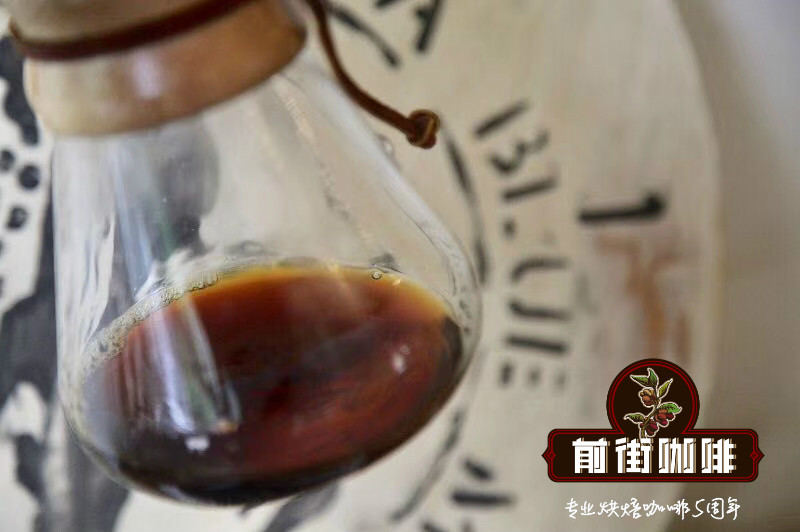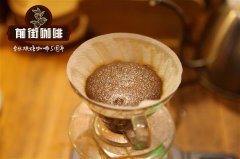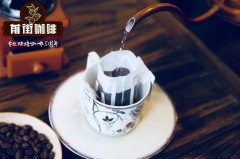The characteristics of Jamaican Blue Mountain Coffee Why does Blue Mountain Coffee produce so little?

Professional coffee knowledge exchange more coffee bean information please follow the coffee workshop (Wechat official account cafe_style)
Blue Mountain is located in the coffee belt between 25 degrees north latitude and 25 degrees south latitude. Most of the blue mountain mountains are more than 1800 meters above sea level. There are fertile new volcanic soil soil, which is rainy all the year round and has a large temperature difference between day and night. The most important thing is that the climate here is unique! Almost every afternoon, clouds cover the top of the mountain, which not only shades the coffee trees naturally, but also brings abundant water vapor, which makes the taste and aroma of Blue Mountain coffee outstanding.
The island of Jamaica is the highest mountain in the Caribbean. The distant mountains are shrouded in a faint blue atmosphere because of the refraction of the azure sea.
Five hundred years ago, when Columbus passed by, he commented that this was the quietest island in the world he had never seen.
The quality standard of 100% certified Jamaican Blue Mountain Coffee is irreplaceable with any other coffee, as strict and precise regulations make one of the most special coffees in the world. Growing in a precise geographical location at high altitude and under certain conditions, these coffee beans are certified by Jamaica as 100% pure blue mountain coffee beans. Due to the increase of production space, the number of coffee produced is limited, coupled with its unique taste and characteristics, the demand is extremely high, and the caffeine content is low, about half or less than that of other varieties.
Blue Mountain Coffee is a coffee bean brand grown in a limited area of the Blue Mountain Mountains of Jamaica at an altitude of 800-1200 meters. It usually grows on steep slopes, sometimes as high as 60 degrees and requires manual mining. It is characterized by its high aroma and delicate taste. Because of its high aroma, it is often mixed with other raw beans and more than 80% of it is exported to Japan.
Blue Mountain Coffee itself has a thick and well-balanced taste, slightly acidic and obvious sweetness, no bitterness at all.
Because it is only planted in limited areas, the harvest is very low. The output of raw beans in 2014 was about 875 metric tons. From July 2013 to July 2014, the amount of raw beans exported by Jamaica to Japan was 283 tons, plus 440 metric tons. The total is 723 tons. After baking, 578 tons of ripe beans will be produced. Taking 15 grams as a cup, about 38.56 million cups, the average person in Japan drinks less than one cup of Blue Mountain coffee in a year. In fact, Blue Mountain coffee beans are the same as other coffee beans grown in Jamaica, but because they are cultivated in a harsh environment and screened through strict inspection, they produce a very meticulous taste. In 1953, the Jamaican government drew a clear line between the Blue Mountains and other areas in accordance with the law, stipulating that the name of Blue Mountain Coffee should not be used for coffee in areas other than the Blue Mountains. Only coffee made in selected areas of the Blue Mountains can be called "Blue Mountain Coffee".
The origin of the barrel:
Of all the coffee, only Blue Mountain is barreled, and other coffee exits are in sacks. It is said that from the mid-18th century, flour shipped from England to Jamaica during the British colonial period was recycled in empty buckets and used to transport coffee and rum. The buckets used today are all wood from temperate forests in the United States. the advantage of buckets is to absorb and release internal and external humidity without much change, which can alleviate sudden temperature changes in the process of transportation. Another barrel sealed off coffee aroma, can maintain the best coffee quality, but the additional cost will be higher.
How to make blue mountain coffee by hand?
Prepare 15g powder, water temperature 88 degrees, grinding degree BG 5R (Chinese standard 20 sieve, 60% pass rate), water powder ratio close to 1:15
Technique: first steam with 30g water, the steaming time is 30s, pour water against the flour, the first water injection to 120g cut off water, when the water level drops 1 inch 3-1 / 2, then the second water injection, water injection to 225g stop, cooking time is controlled at about 2 minutes 05 seconds.
Flavor: the taste of Blue Mountain is very clean, very mild, sweet chocolate, very mellow. The taste is full-bodied and mellow. the sweet, sour and bitter taste of the coffee is perfect, with no bitterness at all, only a moderate and perfect sour taste and a long fruity taste. Kono, kalita fan-shaped, cake cup cooking, the concentration is increased, the taste is solid, thick and strong, while the V60 filter cup boils, refreshing and sweet taste, sugar sweetness, the end will have nuts, high concentration of dark chocolate aftertaste and back sweet.
Qianjie coffee: Guangzhou bakery, the store is small but a variety of beans, you can find a variety of unknown beans, but also provide online store services. Https://shop104210103.taobao.com
Important Notice :
前街咖啡 FrontStreet Coffee has moved to new addredd:
FrontStreet Coffee Address: 315,Donghua East Road,GuangZhou
Tel:020 38364473
- Prev

Organic cultivation in Sidamo, Ethiopia | Adem Chilcho Sherick G3 sun-dried beans Longberry
Professional coffee knowledge exchange more coffee bean information please follow the coffee workshop (Wechat official account cafe_style) Organic cultivation in Sidamo, Ethiopia | Adem Chilcho Sherick G3 what is the flavor of dried beans Longberry? Sidamo, Ethiopia, is the best producer of sun-dried beans, producing a lot of reminiscent of sun-cured coffee, but the cup test score in the past can not be this year.
- Next

What's the taste of hand-made coffee in Santo Veloso, Brazil? how to make hand-made coffee in Santos?
Professional coffee knowledge exchange more coffee bean information please follow Coffee Workshop (Wechat official account cafe_style) Coffee Brazil-Manor Minas Veloso red fruit NY.2 only picks 100% red ripe fruit is located in southeastern Brazil, located in the heart of the state of Minas Gerais, one of the three major coffee producing areas, coffee production has been under way since the 19th century. Minas Gerais
Related
- Detailed explanation of Jadeite planting Land in Panamanian Jadeite Manor introduction to the grading system of Jadeite competitive bidding, Red bid, Green bid and Rose Summer
- Story of Coffee planting in Brenka region of Costa Rica Stonehenge Manor anaerobic heavy honey treatment of flavor mouth
- What's on the barrel of Blue Mountain Coffee beans?
- Can American coffee also pull flowers? How to use hot American style to pull out a good-looking pattern?
- Can you make a cold extract with coffee beans? What is the right proportion for cold-extracted coffee formula?
- Indonesian PWN Gold Mandrine Coffee Origin Features Flavor How to Chong? Mandolin coffee is American.
- A brief introduction to the flavor characteristics of Brazilian yellow bourbon coffee beans
- What is the effect of different water quality on the flavor of cold-extracted coffee? What kind of water is best for brewing coffee?
- Why do you think of Rose Summer whenever you mention Panamanian coffee?
- Introduction to the characteristics of authentic blue mountain coffee bean producing areas? What is the CIB Coffee Authority in Jamaica?

